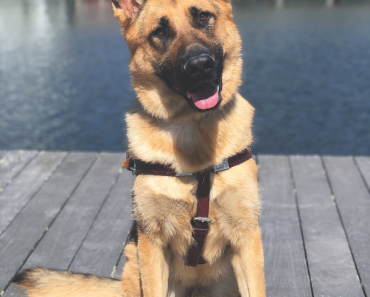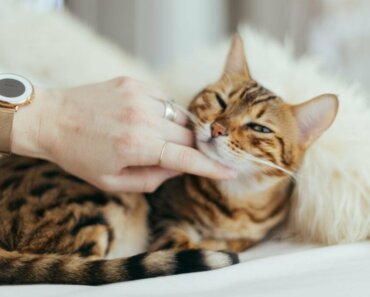Veterinary visits are a necessary part of being a dog or cat parent. Here are some tips to help you prepare for an appointment with an integrative veterinarian, so you can get the most out of it.
If you’re among the growing number of dog and cat parents seeking alternative therapies for your four-legged companion, you may be considering taking him to an integrative veterinarian. But how does integrative medicine differ from conventional medicine, and what’s the best way to prepare for your appointment? The following tips and tricks will help you plan your dog or cat’s vet visit so you can get the most out of it.
WHAT IS INTEGRATIVE VETERINARY MEDICINE?
Integrative medicine incorporates both traditional and holistic approaches, and focuses on overall well-being, lifestyle, nutrition, and behavior when it comes to forming treatment plans for a health issue. Integrative vets combine conventional medical techniques, such as medication and surgery, with holistic remedies (e.g. acupuncture, chiropractic care, homeopathy, and physical rehabilitation) to create the best treatment regimen for their canine and feline patients. In other words, integrative medicine encompasses all the treatment options necessary to help your dog or cat feel better.
plans for a health issue. Integrative vets combine conventional medical techniques, such as medication and surgery, with holistic remedies (e.g. acupuncture, chiropractic care, homeopathy, and physical rehabilitation) to create the best treatment regimen for their canine and feline patients. In other words, integrative medicine encompasses all the treatment options necessary to help your dog or cat feel better.
BEFORE YOUR VISIT
If this is your first time visiting an integrative veterinarian, write down any questions you have before your dog or cat’s appointment. By compiling a list of questions as you think of them, you won’t end up forgetting something you wanted to ask on the day of your appointment. Keep in mind that no question is ever too silly, whether you’re inquiring about diagnostic testing, how a particular therapy works, treatment costs, etc.
Also be sure to keep track of any concerning clinical symptoms in your dog or cat (e.g. vomiting, diarrhea, lethargy, skin problems, mobility issues), along with descriptive information (e.g. the color and texture of his feces, or how many times a day he goes).
Consider keeping a journal about your animal’s health, which you can bring along to your appointment. The veterinarian will find this information very helpful when it comes to determining what’s wrong with your companion and how to treat it.
To help your dog or cat feel more at ease when going to the vet, take her to the office for a couple of short visits before the day of your appointment, bringing along a few treats and toys and introducing her to the staff. By helping her associate vet visits with something enjoyable, you can help ease her anxiety and fear.
ON THE DAY OF THE VISIT
On the morning of your dog or cat’s appointment, sit down and talk gently to her about what to expect. She may not understand your words, but your calmness and reassuring tone will help her relax.
If you’ve been requested ahead of time to restrict food or water, make sure you’ve followed these instructions fully. Bring along all relevant paperwork, as well as any other necessary items.
Play soothing music on the way to the clinic and try to maintain a calm demeanor around your animal.
DURING THE VISIT
When meeting your integrative vet for the first time, he or she will likely begin by having a  detailed conversation with you about your dog or cat’s well-being and the treatment options available (conventional and holistic). This is when you can ask your questions, share your observations about your animal’s health, and voice any concerns you might have.
detailed conversation with you about your dog or cat’s well-being and the treatment options available (conventional and holistic). This is when you can ask your questions, share your observations about your animal’s health, and voice any concerns you might have.
It is essential that you feel relaxed and comfortable around your veterinarian when going over this information. A healthy vet-client relationship is vital when planning therapy for your dog or cat, so if you feel belittled about asking questions, or pressured into a certain treatment plan, this is not the right doctor for you and you should look elsewhere for guidance. Rest assured that if you do not like how a vet interacts with you or your animal, you do not have to continue going to this hospital for treatment. There’s a growing number of amazing integrative vet services available in the US and Canada, and finding the right one is the most important thing you can do for your four-legged friend.
After your initial conversation about your animal’s health, your veterinarian will discuss any diagnostic tests that might be needed, and work with you to formulate a treatment plan. Maintaining steady communication with your vet through each step of the process is crucial.
AFTER THE VISIT
After your first appointment with your integrative vet is over, you’ll pay at the front desk and likely schedule future appointments, and/or go over medications or supplements. Your veterinarian may also offer an email address so you can ask more questions or contact the clinic about further concerns during the course of your animal’s treatment regimen.
Last but not least, take your dog or cat home to rest and relax after the appointment, and give her some extra treats (if she’s allowed to eat right away) along with plenty of praise and petting!



























